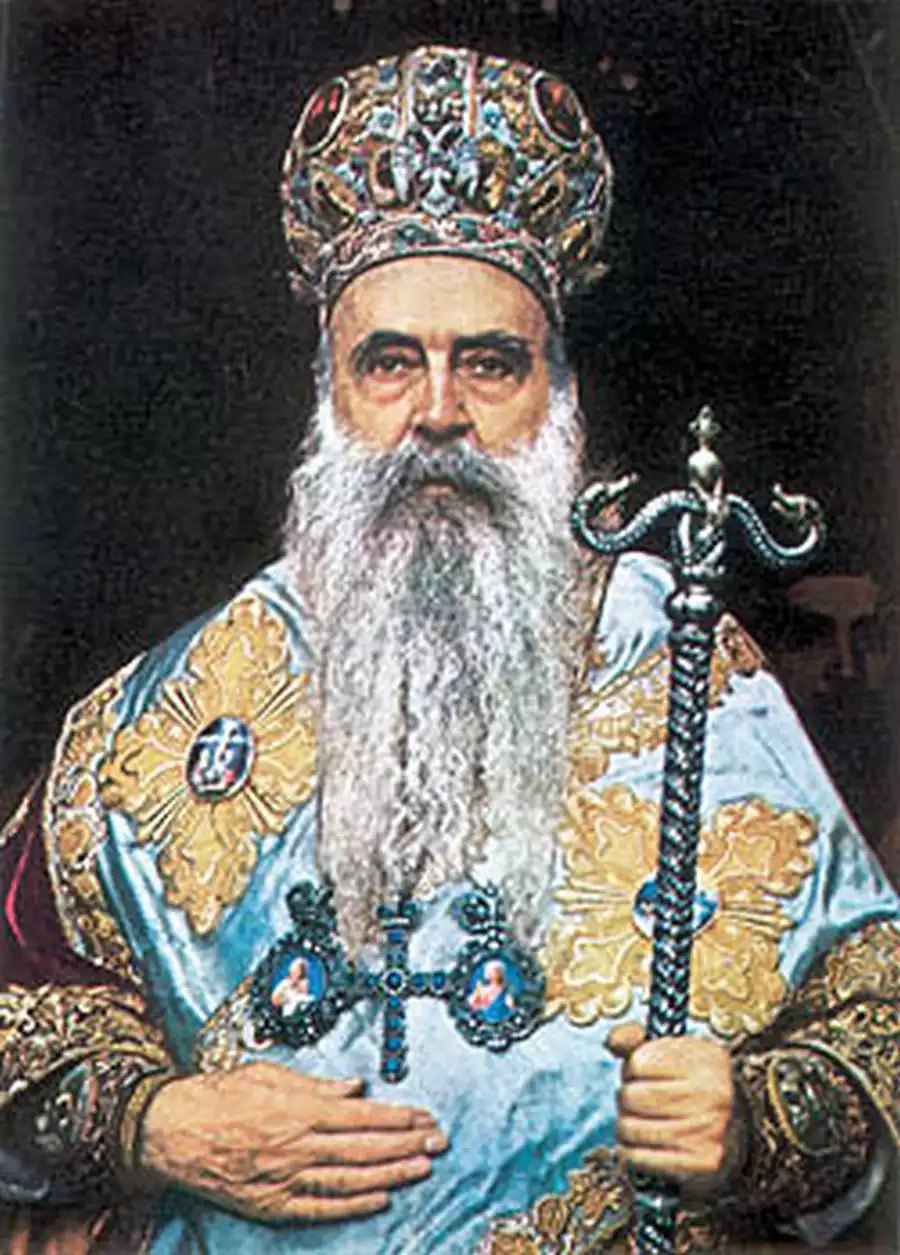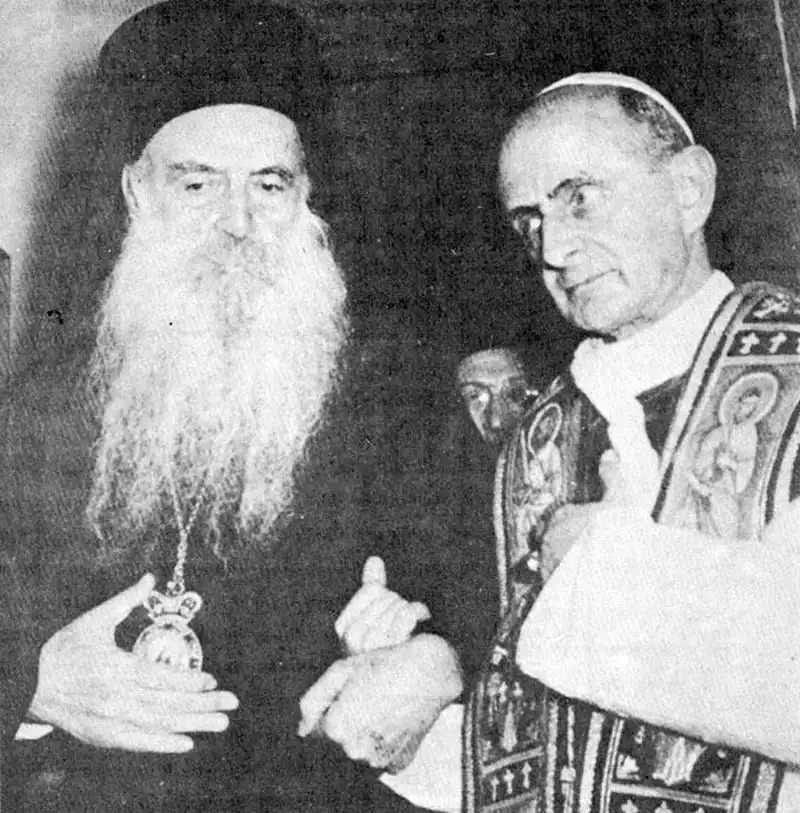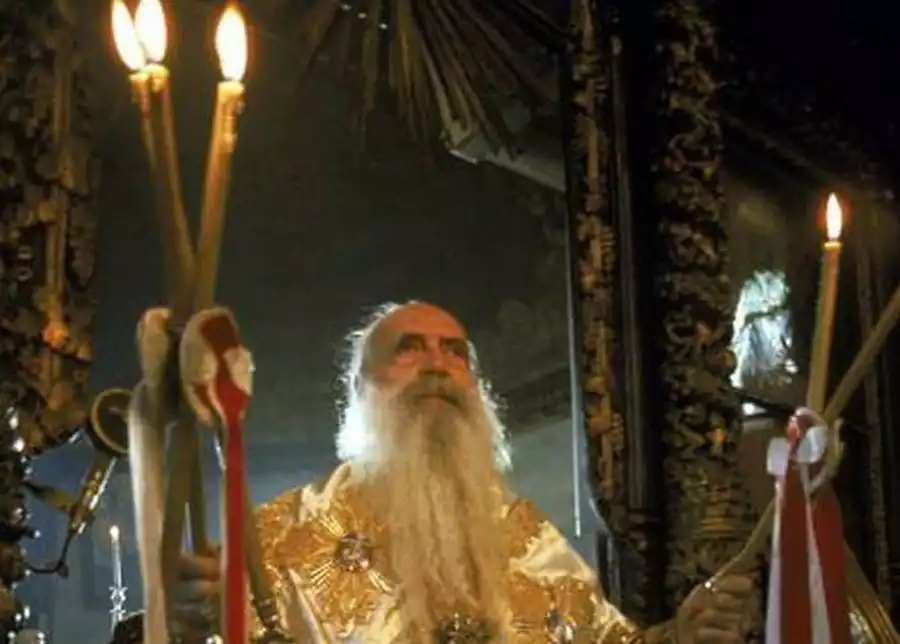
Born on March 25, 1886, in the village of Vasiliko, Epirus, and passing into eternity on July 7, 1972, Aristoklis Spyrou, better known as Athenagoras, embarked on a spiritual and transformative journey that reshaped the landscape of 20th-century Christianity. His path from a small Greek village to the exalted role of Ecumenical Patriarch was marked by intellectual acumen, spiritual depth, and a steadfast commitment to the unity of Christendom. Athenagoras’ tenure as Patriarch was characterized by significant changes within the Orthodox Church and pivotal strides in its relations with the broader Christian community, epitomized by his historic encounter with Pope Paul VI in 1964. His life, a testament to faith’s power and the relentless pursuit of religious harmony, stands as an enduring beacon of hope during times of global turmoil and division.
Early Beginnings and Theological Foundations
Athenagoras, born into a world of cultural and religious transition, showcased an early affinity for theological studies. His formative years were spent at the Theological School of Halki, where he honed his spiritual and academic acumen. Ordained a monk and later a deacon, he adopted the name Athenagoras, marking the beginning of a lifelong dedication to the church. His early assignments, including his role in the Metropolis of Pelagonia, were overshadowed by the Balkan Wars and the seismic political shifts following the Ottoman Empire’s decline.
Amidst these upheavals, Athenagoras’ resolve remained unshaken. His move to the Diocese of Athens in 1919 and subsequent elevation to Metropolitan of Corfu and Paxos in 1922, further solidified his reputation as a gifted administrator and a man of deep faith. His tenure in Corfu was marked by a robust organizational zeal, fostering interfaith relations and bolstering the diocese’s informational outreach.
The call from across the Atlantic in 1930, nominating him as Archbishop of North and South America, unveiled a new chapter in his spiritual journey. This role not only expanded his influence but also tested his ability to bridge cultural and religious divides.

A Patriarch’s Vision in a World Divided
Athenagoras’ tenure as Archbishop of North and South America was a period of reconciliation and growth. He adeptly united the fragmented Greek communities, spearheaded the construction of new churches and schools, and founded the esteemed theological school in Boston. His diplomatic prowess was evident in his robust relations with key American figures, including Presidents Roosevelt and Truman, showcasing his ability to navigate complex political landscapes for the benefit of his flock.
In 1948, Athenagoras’ journey took a pivotal turn with his election as the Ecumenical Patriarch. His arrival in Constantinople, facilitated by American support, was a moment of grandeur and profound significance. As Patriarch, he reinvigorated the Orthodox Church through organizational reforms, global expansion of its presence, and fostering theological education. His visionary leadership culminated in the groundbreaking meeting with Pope Paul VI, initiating a new era of dialogue and cooperation between the Orthodox and Roman Catholic Churches.
In a moment steeped in history and symbolic significance, Ecumenical Patriarch Athenagoras and Pope Paul VI met in Jerusalem to lift the mutual anathemas that had marked the Great Schism between the Orthodox and Catholic Churches since 1054. This landmark event, a culmination of centuries of estrangement, heralded a new dawn in inter-Christian relations. The lifting of the anathemas in 1964 was not merely a ceremonial gesture; it represented a heartfelt commitment to healing, understanding, and initiating a bilateral theological dialogue after long centuries of silence and division. This profound act of reconciliation and mutual forgiveness opened the doors to ongoing conversations and efforts towards unity, marking a pivotal chapter in the history of Christian ecumenism.
Athenagoras’ legacy is a mosaic of spiritual leadership, ecumenical outreach, and diplomatic ingenuity. His life’s journey from a small village in Epirus to the highest echelons of the Orthodox Church is a narrative of faith, hope, and unwavering commitment to Christian unity. His efforts in healing the centuries-old schism and advocating for interfaith dialogue resonate as a beacon of hope in our often-divided world. Athenagoras’ story is not just a chapter in the annals of religious history but a timeless inspiration for peace and understanding across religious divides.

References
Harris, Elizabeth. “Ecumenical Patriarch Athenagoras: A Life for Unity.” Oxford University Press, 2018.
In.gr. “Ο Αθηναγόρας, μοίρα των πρωτοπόρων.” Accessed January 20, 2024.
Kostick, Conor. “The Life and Times of Patriarch Athenagoras.” Princeton Press, 2021.
Petersen, John. “Athenagoras of Constantinople: His Life and Impact.” Cambridge University Press, 2020.
Smith, Robert J. “Athenagoras: A Patriarch of Progress.” Harper & Brothers, 2019.
Users.sch.gr. “Αθηναγόρας Σπύρου.” Accessed January 20, 2024.
